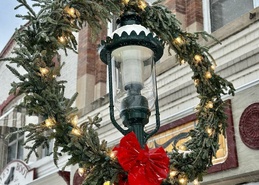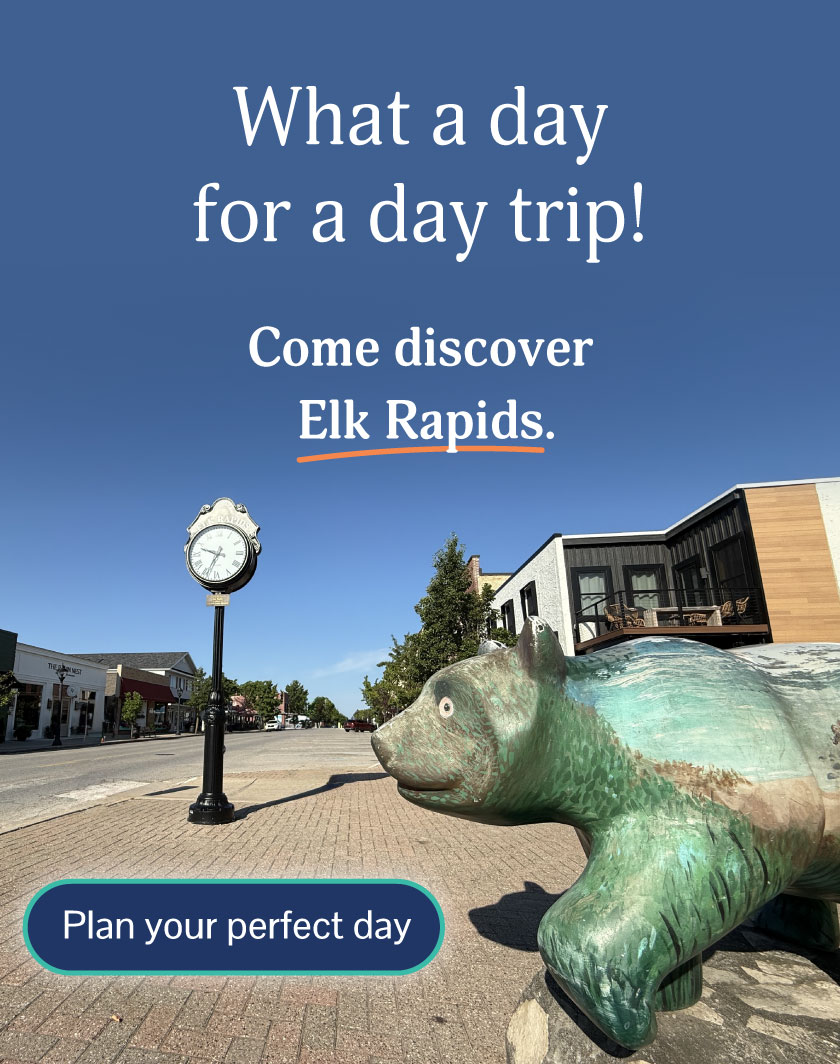What Has Michigan Oil Done For You Lately?
June 18, 2015

National debate over fracking has heated up the age-old conversation of how to balance economic interests and conservation. This discussion is particularly familiar in Michigan.
Nearly 40 years ago, concern over balancing economics and ecosystems led to the development of a uniquely Michigan solution: the Michigan Natural Resources Trust Fund (MNRTF).
An unlikely collaboration between the state petroleum industry and conservation groups, the MNRTF has invested more than $1 billion of state-owned mineral rights revenue in public properties in every county in the state.
While most people are aware of the pristine lakeshores, abundant parks and state game areas that form the foundation of our state’s tourism assets and enhance our quality of life, only a fraction are aware of how the MNRTF has made the acquisition and maintenance of many of these incredible properties possible.
Unlikely Partners
When Shell Oil Company decided to drill in the Pigeon River watershed in July 1970, years of debate among DNR biologists, state representatives, conservation groups and the petroleum industry was set in motion. For the next five years, the groups were unable to reach consensus on an appropriate fate for the 500-acre wilderness tract in question.
In 1975, Tom Washington, executive director of the Michigan United Conservation Clubs (MUCC) reached out to the executive director of the Michigan Oil and Gas Association (MOGA), Frank Mortl, to find a solution.
The result of that dialogue was summarized in a 1988 address Washington gave to MOGA. He explained how "two special interest organizations, on seemingly opposite sides of an issue" came together to "make a solid commitment to put aside their differences and hammer out an agreement that has lasting benefits for both of their constituencies and society as a whole"¦It is our view that if our air, water, land, forest, fish and wildlife resources are properly and thoughtfully managed, they can be shared by a wide range of competing interests to benefit everyone."
In July 1976, Governor William Milliken signed Act 204 into Michigan law, creating the Michigan Land Trust Fund. The act specified that all revenues from mineral rights owned by the state be placed in the fund and that "interest and earnings of the fund shall be used exclusively for the purchase of land, or rights in land, for hunting or fishing and recreation purposes including, but not limited to camping, hiking, picnicking, and swimming..." In 1984, Proposal B amended the Michigan constitution and renamed the fund the Michigan Natural Resources Trust Fund for the acquisition and development of these public recreation properties.
In other words, money the state made from fossil fuel development on public land, or via mineral rights owned by the state, would be returned to the public in the form of acquiring new land for public recreation or making improvements to public recreation land that already existed.
Only units of government (and some school districts) can apply to the MNRTF for funding – such as townships, counties or cities – and the properties acquired or improved must remain owned and operated by these units of government. These properties will remain protected for public use in perpetuity.
Raids and Referendums
Although the fund was intended only for land acquisition, its first seven years saw more than $150 million diverted to the Michigan General Fund and other state programs. This was an unpopular choice and a 1982 voter referendum banned all future raids on the fund. However, legislation passed in 1985 earmarked $20 million of the fund’s annual budget for the Michigan Strategic Fund, a fund with "broad authority to promote economic development and create jobs."
Clear how they wanted these dollars spent, in 1994, Michigan voters again made their voices heard and passed Proposal P.
The proposal amended the state constitution to reverse the Strategic Fund diversion and established the Michigan State Parks Endowment Fund. Until the MNRTF fund reached its $500 million cap, $10 million was diverted to the Parks fund annually. The MNRTF reached its $500 million cap in May 2011.
According to the DNR, the Parks fund exists solely to support the state parks system with a "stable, consistent source of funding" for operations, maintenance and projects such as restroom building replacement and parking lot repair.
The Decision-Makers
A five-member board was created to review MNRTF grant applications and make recommendations to the legislature for project support. The state legislature approves the projects and appropriates the funds. Ultimately, the governor must sign the bill.
The board is comprised of the director of the Michigan Department of Natural Resources, the chairman of the Michigan Natural Resources Commission and three Michigan citizens appointed by the governor, with the stipulation that one of the appointed members "shall be from a group representative of sportsman’s associations or interests."
Traditionally, one of these positions has been filled by MUCC member.
Current MOGA President and CEO Erin McDonough is vice chair of the MNRTF board. The board reviews grant proposals throughout the year, making their final recommendations in October.
Though the fund allows for both land acquisition and property development, it’s mandated that 75 percent of funds must be spent on land acquisition, with 25 percent dedicated to development projects. Development projects are improvements made to existing publicly-owned land to make them more accessible to the public and better suited to recreation, such as trail-building or installing boardwalks, restrooms or wayfinding signs.
MNRTF grants can only pay for 75 percent of a project’s total cost. Twenty-five percent of the cost must come from a "local match," provided by the unit of government applying. However, many townships or counties don’t have the resources to raise these dollars.
To solve this dilemma, governmental units routinely partner with private nonprofit conservation organizations, such as land trusts and conservancies, to help raise the necessary matching funds from individual donors or other grants. They also often rely on these conservation organizations to provide technical support and assistance in evaluating the properties and preparing the complex applications.
In the 2014 round, the legislature approved approximately 44 percent of the applications submitted, funding 44 development projects and 25 land acquisition projects throughout the state.
Nearly $6.5 million in development grants were awarded in the northern Michigan region between Emmet, Cheboygan, Benzie, Grand Traverse and Manistee counties. A parking lot will be constructed at the Cedar Run Creek Natural Area in Long Lake Township, the Village of Wolverine’s Lumberman’s Park will build a trailhead and see park renovations and Arcadia’s Lake Michigan beach will enjoy numerous accessibility improvements, facilities remodeling and educational signage installation, among many other projects. One acquisition grant of $150,000 was awarded to the DNR Forest Resources Division in Otsego County for the protection of an upper Black River property in the Pigeon River watershed.
As former Executive Director of MUCC and now MOGA President, McDonough enjoyed the unique opportunity to participate in both the organizations that played a pivotal role in the creation of the MNRTF and continue to contribute to its successful implementation.
For McDonough, the Natural Resources Trust Fund has "show[n] that we can have a thriving oil and gas industry while maintaining Michigan’s status as a premier outdoor recreation destination."
Trending

Three Holiday Shopping Sprees (and Trees!)
Head north of the 45th parallel this weekend for three chances to get all your holiday shopping done weeks before you’… Read More >>
Writing a Heartfelt Card
They say that letter writing is a lost art, but Thrive 45° Young Professionals Group and the Petoskey Chamber are hoping… Read More >>
Distillery Ups and Downs of 2025: Craft Spirits Industry Is Shifting, but Not Shaken
In late October, scores of people bellied up to the bar to sample a variety of spirits made at Northern Latitudes’ new… Read More >>


